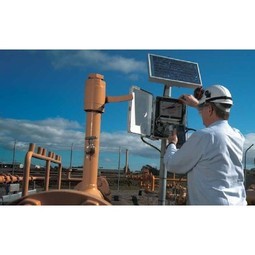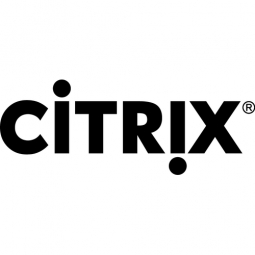Customer Company Size
Large Corporate
Region
- America
Country
- United States
Product
- NetScaler ADC
- XenApp
- XenDesktop
- XenMobile
- NetScaler SDX
Tech Stack
- Intel Xeon Processors
- Virtualization Technology
- Global Server Load Balancing (GSLB)
Implementation Scale
- Enterprise-wide Deployment
Impact Metrics
- Cost Savings
- Customer Satisfaction
- Productivity Improvements
Technology Category
- Networks & Connectivity - Network Management & Analysis Software
- Infrastructure as a Service (IaaS) - Cloud Computing
Applicable Industries
- Utilities
Applicable Functions
- Business Operation
Use Cases
- Remote Asset Management
Services
- System Integration
About The Customer
Louisville Gas and Electric Company (LG&E) and Kentucky Utilities Company (KU) are part of the PPL Corporation family of companies, headquartered in Louisville, Kentucky. They are significant players in the electric utilities industry, serving nearly 1.3 million customers across 83 counties in Kentucky and five counties in Virginia. Additionally, they provide natural gas services to customers in Louisville and 16 surrounding counties. Known for their best-in-class customer satisfaction ratings, LG&E and KU employ nearly 3,600 people. Their operations are extensive, covering a large geographical area and a diverse customer base. The companies are committed to digital transformation and have been moving towards a paperless, mobile-powered workforce to enhance operational efficiency and customer service. This commitment is part of their broader strategy to improve user experience, productivity, and cost savings while ensuring high availability and disaster recovery capabilities.
The Challenge
In order to empower field employees to access the information they need at any time, LG&E and KU have steadily moved toward mobile-powered workforces and paperless operations. In a power plant, mobile connections can be challenging. Wireless network connections aren’t always available in power plants, and when they are, they often suffer from interference. To combat the unreliable nature of wireless connections, the LG&E and KU development group turned to cellular connectivity and developed several internal-facing mobile applications that employees use on Apple iPad devices. In the early stages of the move to a cellular-based approach, employees were sometimes unable to connect to the mobile applications due to LG&E and KU’s previous load balancing solution ineffectively handling traffic. The solution couldn’t consistently deliver the needed capacity and reliability—which meant that employees couldn’t consistently access critical apps and data. To support more secure, reliable mobile-application access in the field and on employees’ personal devices, in 2012, LG&E and KU deployed Citrix XenMobile. Citrix NetScaler was already deployed to provide remote access to a small, internal virtual-desktop-infrastructure (VDI) environment. The companies also used a different load-balancing solution to support other critical application workloads, such as their existing SAP solution–based customer portal, Microsoft Exchange, and Oracle Financials. The addition of XenMobile, and the pending end-of-life of the existing load-balancing appliance, provided the opportunity for LG&E and KU to consolidate all their load-balancing requirements onto a single vendor platform—a move that could meet application delivery needs and lower overall operational costs.
The Solution
LG&E and KU chose NetScaler appliances, run on Intel Xeon processors, as their solution. The utilities upgraded their existing NetScaler solutions to the multitenant NetScaler SDX platform, which has allowed them to service additional applications and isolate virtual instances from a single appliance. With the NetScaler SDX solution, LG&E and KU use a single platform for all of their load-balancing needs and help secure access to critical enterprise application workloads and their entire Citrix infrastructure, which includes Citrix XenApp, XenDesktop, XenMobile, and ShareFile. Field employees securely access applications from their mobile devices using the XenMobile and NetScaler SDX solutions. The NetScaler SDX appliance ensures the availability of XenMobile mobile-device management (MDM) servers during high-traffic surges, delivering 100-percent uptime for apps and data. LG&E and KU reduce costs by maintaining a digital “paper” trail that increases accuracy, response times, and productivity by removing the need to manage pieces of paper and the risk of losing those papers. LG&E and KU can now host quality assurance (QA) and production environments from the same NetScaler appliance, separating them as virtual instances on the multi-tenant NetScaler platform, NetScaler SDX. And because NetScaler appliances are run on Intel Xeon processors, LG&E and KU’s NetScaler solution takes advantage of the processor family’s improved encryption, performance, and data availability. NetScaler appliances also benefit from Intel Virtualization Technology for Directed I/O (Intel VT-d), which improves performance for input/output (I/O) devices in virtualized environments.
Operational Impact
Quantitative Benefit

Case Study missing?
Start adding your own!
Register with your work email and create a new case study profile for your business.
Related Case Studies.

Case Study
IoT Solutions for Smart City | Internet of Things Case Study
There were several challenges faced: It is challenging to build an appliance that can withstand a wide range of voltage fluctuations from as low at 90v to as high as 320v. Since the device would be installed in remote locations, its resilience was of paramount importance. The device would have to deal with poor network coverage and have the ability to store and re-transmit data if networks were not available, which is often the case in rural India. The device could store up to 30 days of data.

Case Study
Automation of the Oguz-Gabala-Baku water pipeline, Azerbaijan
The Oguz-Gabala-Baku water pipeline project dates back to plans from the 1970’s. Baku’s growth was historically driven by the booming oil industry and required the import of drinking water from outside of the city. Before the construction of the pipeline, some 60 percent of the city’s households received water for only a few hours daily. After completion of the project, 75 percent of the two million Baku residents are now served around the clock with potable water, based on World Health Organization (WHO) standards. The 262-kilometer pipeline requires no pumping station, but uses the altitude differences between the Caucasian mountains and the capital to supply 432,000 m³/d to the Ceyranbatan water reservoir. To the people of Baku, the pipeline is “the most important project not only in 2010, but of the last 20 years.”

Case Study
GPRS Mobile Network for Smart Metering
Around the world, the electricity supply industry is turning to ‘smart’ meters to lower costs, reduce emissions and improve the management of customer supplies. Smart meters collect detailed consumption information and using this feedback consumers can better understand their energy usage which in turn enables them to modify their consumption to save money and help to cut carbon emissions. A smart meter can be defined in many ways, but generally includes an element of two-way communication between the household meter and the utility provider to efficiently collect detailed energy usage data. Some implementations include consumer feedback beyond the energy bill to include online web data, SMS text messages or an information display in consumers’ premises. Providing a cost-effective, reliable communications mechanism is one of the most challenging aspects of a smart meter implementation. In New Zealand, the utilities have embraced smart metering and designed cost effective ways for it to be implemented. The New Zealand government has encouraged such a move to smart metering by ensuring the energy legislation is consistent with the delivery of benefits to the consumer while allowing innovation in this area. On the ground, AMS is a leader in the deployment of smart metering and associated services. Several of New Zealand’s energy retailers were looking for smart metering services for their residential and small business customers which will eventually account for over 500,000 meters when the multi-year national deployment program is concluded. To respond to these requirements, AMS needed to put together a solution that included data communications between each meter and the central data collection point and the solution proposed by Vodafone satisfied that requirement.

Case Study
NB-IoT connected smart meters to improve gas metering in Shenzhen
Shenzhen Gas has a large fleet of existing gas meters, which are installed in a variety of hard to reach locations, such as indoors and underground, meaning that existing communications networks have struggled to maintain connectivity with all meters. The meter success rate is low, data transmissions are so far unstable and power consumption is too high. Against this background, Shenzhen Gas, China Telecom, Huawei, and Goldcard have jointly trialed NB-IoT gas meters to try and solve some of the challenges that the industry faces with today’s smart gas meters.

Case Study
British Gas Modernizes its Operations with Innovative Smart Metering Deployment
The UK government has mandated that smart meters are rolled out as standard across Great Britain by end of 2020, and this roll-out is estimated to create £14 billion in net benefits to the UK in consumer energy savings and lower energy generation demand, according to the Oxford Economics report, “The Value of Smart Metering to Great Britain.” While smart-metering systems have been deployed in many countries, the roll-out in Great Britain is unique because it is led by energy retailers, who have responsibility for the Electricity and Gas meters. The decision to have a retailer-led roll out was made by DECC (Department of Energy and Climate Change) to improve customer experience and drive consumer benefits. It has also led to some unique system-level requirements to support the unique local regulatory model.

Case Study
OneWireless Enabled Performance Guarantee Test
Tata Power's power generation equipment OEMs (M/s BHEL) is required to provide all of the instrumentation and measurement devices for conducting performance guarantee and performance evaluation tests. M/s BHEL faced a number of specific challenges in conducting PG tests: employing high-accuracy digital communications for instrumentation, shortening setup and dismantling time, reducing hardware required, making portable instrument setup, avoiding temporary cabling work and the material waste costs







